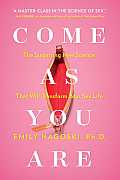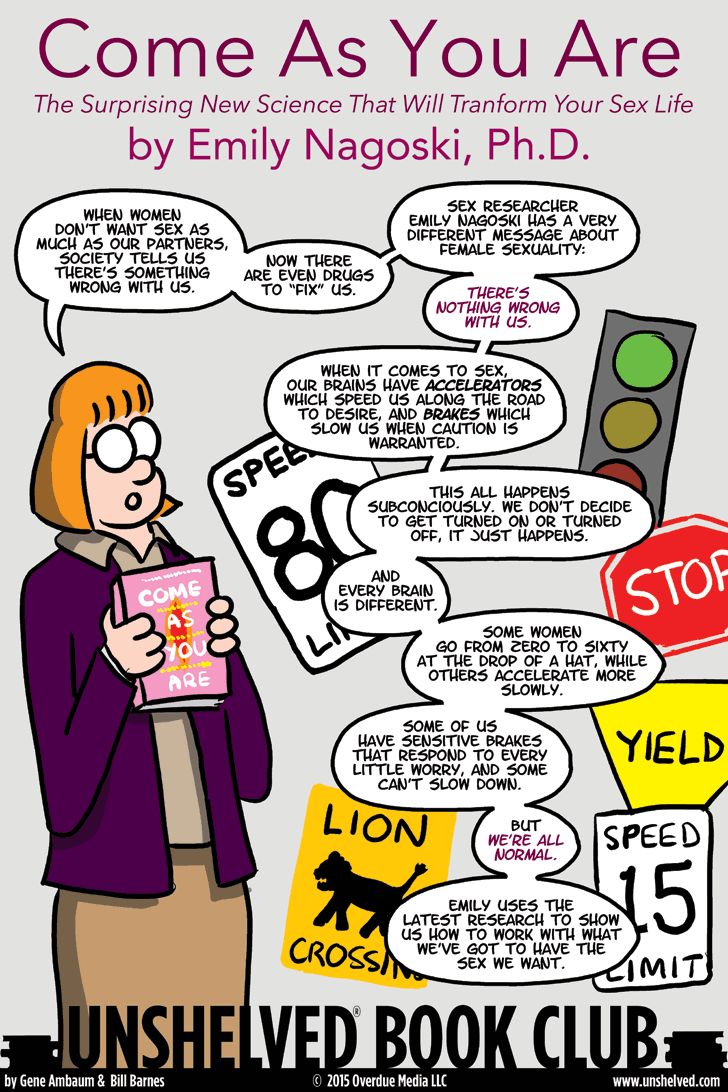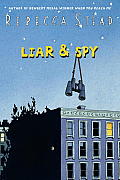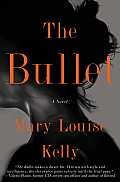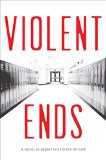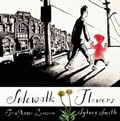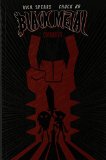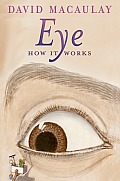Link to this review in the form of a comic strip by billba tagged science • nonfiction
Link to this review by robert tagged mystery • coming of age
Georges (“Gorgeous” to school bullies) and his family just had to leave their great home with its perfect twelve-year-old boy’s room to live in a “nice enough” apartment building. His dad, seeing a flyer for a spy club in a utility room, thinks joining would be a great way for Georges to make new friends. There he meets Safer, who drinks coffee from a flask, and his younger sister Candy, who tracks area prices on sweets. They become friends instantly, and it’s all good, clean, boring fun most of the time (though once, as part of his training, Georges has to break into an alleged serial killer’s apartment).
The good news about the move is the apartment is only a little bit away from Georges’ old home and he doesn’t have to change schools. The bad news: same school, same bully, an obnoxious oaf whose has a plan to make Georges the biology class goat. But Georges, emboldened by his experiences with Safer, comes up with a counterattack.
Why I picked it up: When I checked my local library’s catalog for new, true life spy books, this novel’s title caught my eye.
Why I finished it: Georges is a remarkable character. He’s self-aware, observant (even before Safer’s “training”), and hiding something about his mother being at the hospital that even his enthusiasm for great fortune cookie fortunes can’t hide.
Readalikes: If you’d like to read about real life spies, The Dark Game: True Spy Stories from Invisible Ink to CIA Moles by Paul Janeczko was written for roughly the same age range and is full of non-fiction tales about everything from George Washington’s spies using invisible ink to the murky world of double agents. Janeczko even covers the Black Tom Island explosion that left marks on the Statue of Liberty. The codes and ciphers in Alvin’s Secret Code by Clifford B. Hicks wouldn’t hold up against a practiced amateur solver, but they’d confound most siblings, parents, and teachers.
Link to this review by emilyreads tagged mystery
Professor of French Literature Caroline Cashion led a quiet life in academia until an MRI ordered for persistent wrist pain turns up a most unusual object: a bullet lodged in the back of her neck. Flabbergasted, Caroline can offer no explanation — surely she was never shot, right? — but when she asks her parents, they are curiously elusive. Turns out Caroline was adopted as a toddler after her birth parents were murdered, and evidence that could point to the killer is now bearing down on her spinal cord. Caroline travels from her Georgetown home to Atlanta, where her birth parents lived and died, to figure out exactly who she is and what happened to her, before the killer can track her down and make sure the bullet never sees the light of day.
Why I picked it up: The author was an editor at The Harvard Crimson when my husband was a freshman staffer, so I knew her name and reputation. Plus I like mysteries.
Why I finished it: The story takes excellent twists and turns, including an “OH MAH GAH” one at the end that upends everything. This was one of those books that I stayed up late finishing even though I had to get up early the next morning.
It’s perfect for: My sister, a connoisseur of the psychological/forensic mystery. As the mother of two boys and a girl, she’d be particularly interested in the sibling dynamics between Caroline and her two older brothers, including lots of in-jokes and her brothers’ protective streaks when it comes to her boyfriends.
Link to this review by flemtastic tagged anthology • coming of age
Kirby, a quiet teenager who was bullied relentlessly at his school, took a gun to campus and shot up a pep assembly, killing multiple students.
Shaun David Hutchinson asked sixteen other authors to help him create a short story collection about this shooting. Each provides a different perspective on Kirby’s actions, including stories about the shooter, his sibling, those who tormented him, his victims, and onlookers.
Why I picked it up: The idea of well-known YA authors tackling an issue like school shootings in such an ambitious way made me very excited to read this book.
Why I finished it: It was amazing how seamlessly these stories worked together. What shared information were the authors working from to make the stories consistent? Some chapters were sweet, others violent and cruel. One even was bold enough to tell a story from the perspective of Kirby’s gun.
It’s perfect for: The Marysville-Pilchuck shooting recently took place about an hour away from my house, so this is very timely for upper middle school through high school readers in my area. It is very realistic, including both in depicting the overwhelming sense of loss as well as the guilt, blame, and anger that so many feel. Although it has strong language and disturbing content, libraries should have this book. It exists to explore the “whys” that so many have after a school shooting.
Contributors: Neal Shusterman, Brendan Shusterman, Beth Revis, Cynthia Leitich Smith, Courtney Summers, Kendare Blake, Delilah S. Dawson, Steve Brezenoff, Tom Leveen, Hannah Moskowitz, Blythe Woolston, Trish Doller, Mindi Scott, Margie Gelbwasser, Christine Johnson, E.M. Kokie, and Elisa Nader.
Link to this review by geneambaum tagged picture book
In this wordless picture book, a little girl walks with her father through a city. He’s distracted by a phone call, but she gathers flowers from cracks in the sidewalk and shares her joy wherever she goes.
Why I picked it up: JonArno Lawson is a poet who occaionally writes kids’ books. I like it when poets write other types of books — they tend to be spare instead of expansive. (James Sallis is my favorite mystery writer, and I really enjoyed Paul Guest’s memoir.)
Why I finished it: Smith’s art is amazing. The girl’s red hoodie is the only consistent bit of color from page to page, but there are other bursts of color in an otherwise drab world that emphasize its beauty.
Readalikes: My favorite wordless picture books that also use comics panels, Owly and Polo. And it reminded me of Suzy Lee’s The Wave which I bought because the blue of its water made me happy.
Link to this review by geneambaum tagged paranormal • graphic novel
The new kids at Ronald Reagan Jr High are the brothers Stronghand, evil twins who have dark eyes, wear only black shirts, and find solace in grim black meta music. Listening to a Frost Axe album, they learn the story of a powerful sword, forged by a master blacksmith for a baron of hell, The Roth. After the brothers play it backwards, a demon appears and offers them the chance to claim it and its power. They are able to wield it because they are The Roth reborn. As they try to learn more about the sword and its power, The Roth’s enemy, Von Char, sends his minions to try to kill the boys, kicking off a conflict between Heaven and Hell.
Why I picked it up: I’ve been a fan of Rick Spears since reading Teenagers from Mars.
Why I finished it: It starts right where it should, at the birth of the universe. “First, there was blackness. Then…there was metal.” Took me right back to seventh grade and going to see Accept and Saxon for what was (trust me) an amazing concert.
There were hilarious moments, too, right at the beginning, which told me more were coming. An excited kid shows the twins the school, including the grassy knoll where the metal kids hang out. He calls it the school’s Mos Eisley. And when one of the brothers takes on a much bigger school bully in heroic, David vs. Goliath fashion using a school lunch tray, I was cheering.
Readalikes: The only other graphic novel series involving Heaven, Hell, and the end of the world that has ever made me laugh this hard, Hellboy. And of course Black Metal Omnibvs instantly brought to mind the most hilarious and entertaining heavy metal anywhere, Jack Black and Kyle Gass’s Tenacious D.
Link to this review by sarahhunt tagged picture book • nonfiction
Cutaway illustrations and descriptions of the inner workings of 1) the eye and visual perception and 2) the toilet and sewage treatment (respectively), both packaged as early readers.
Why I picked them up: I’ve loved Macaulay’s detailed informational drawings since I was little — I can stare at them for hours and keep getting more from them.
Why I finished them: I learned new things about the eye, like how the lens changes shape to focus on an image, and a whole lot about the cycle of water through the sewage treatment process, from how a toilet flushes to how industrial-sized sludge digesters use bacteria to produce methane for energy and nutrients for fertilizer. This is some pretty in-depth exploration.
They’re perfect for: An elementary school classroom. These are compelling, full of bite-sized facts, and great introductions to how fun it can be to find out more about the world around us.
